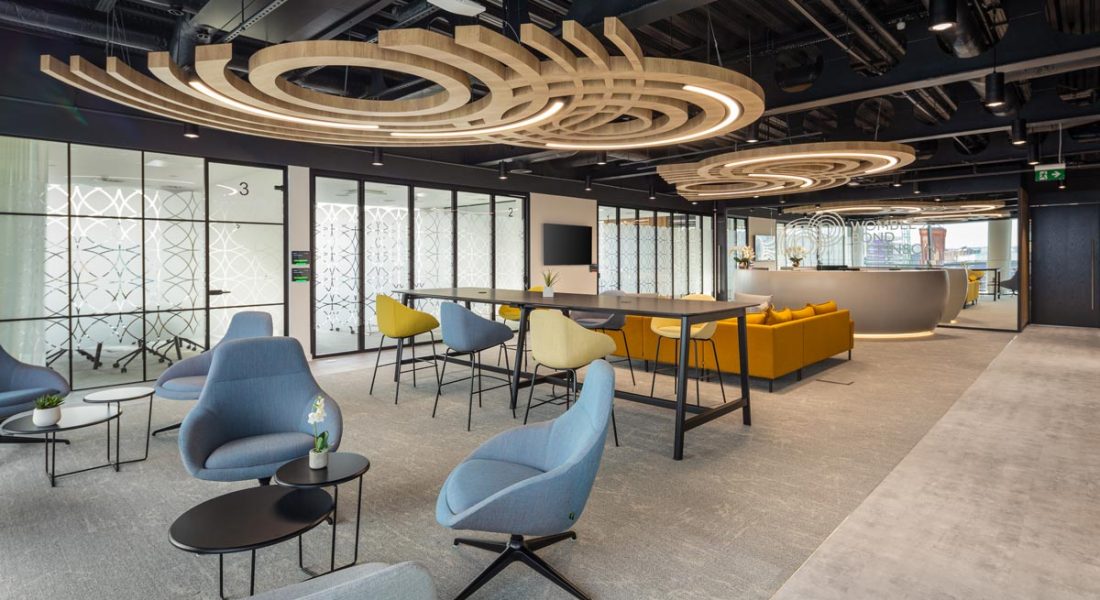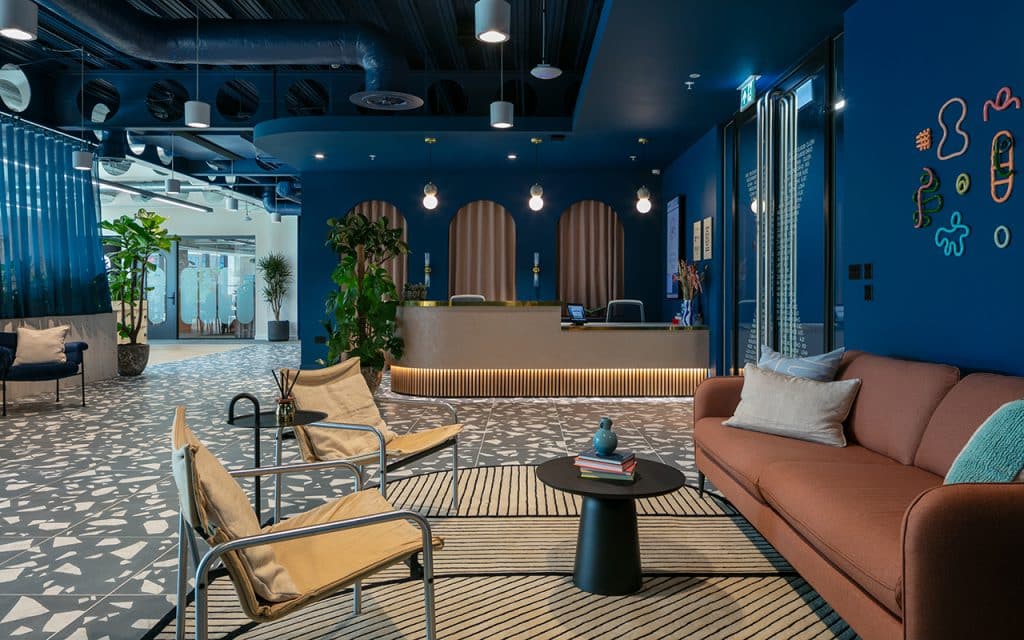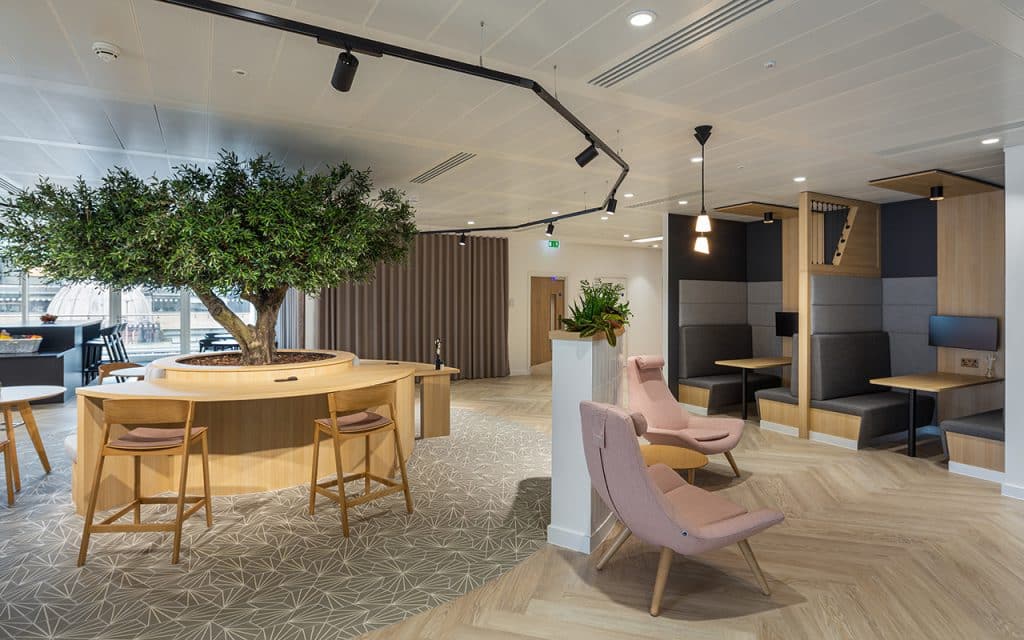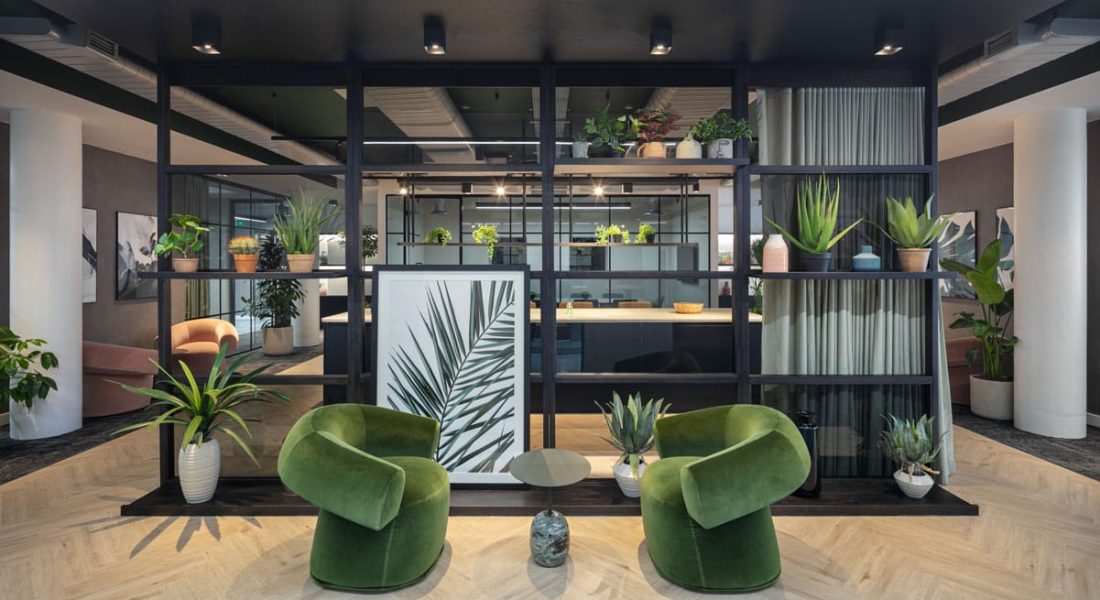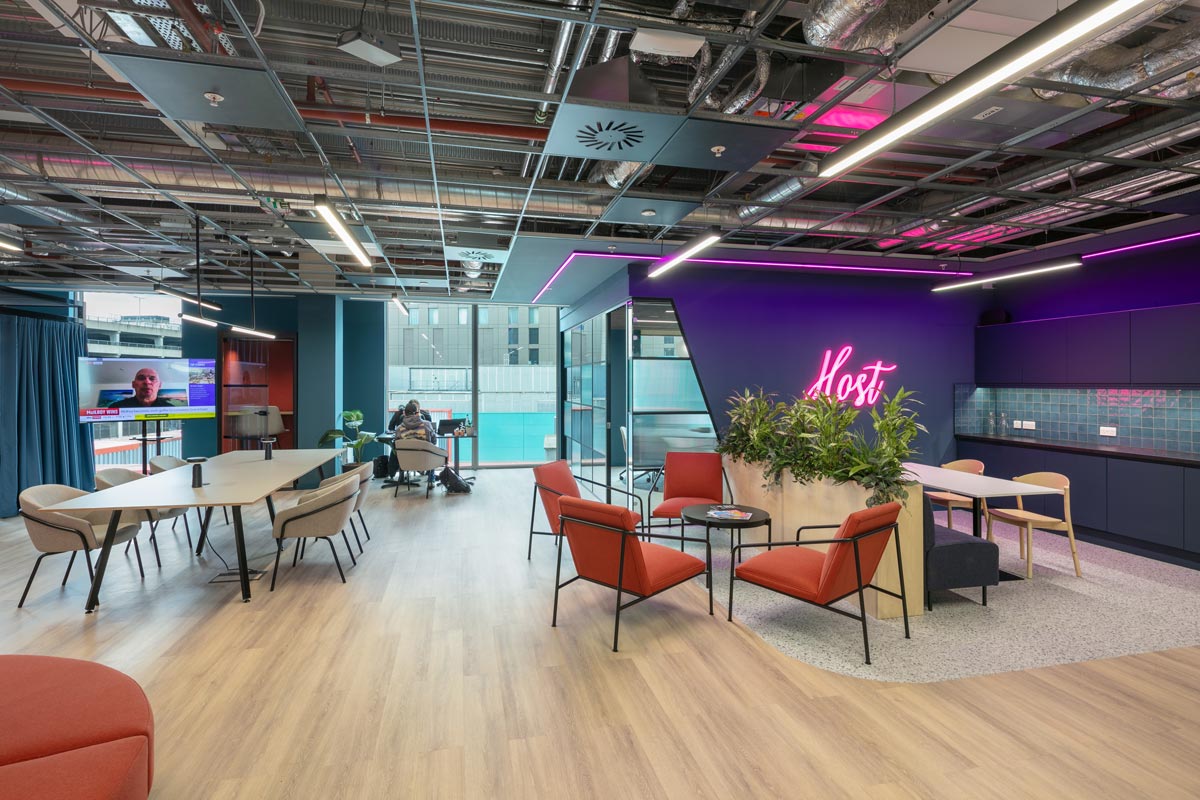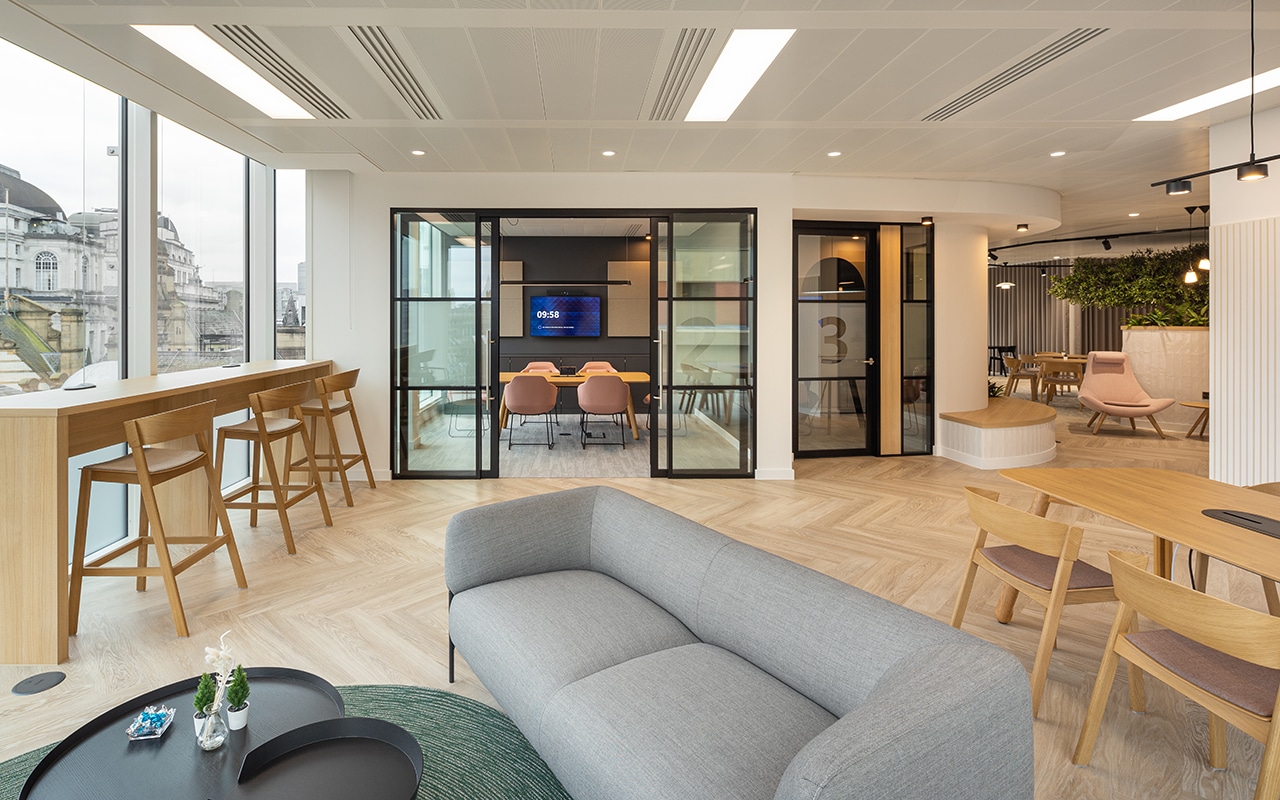1. Start with sustainability targets from the outset
2. Select the right building for your sustainability goals
The building you choose plays a significant part in the overall sustainability of your workspace. Fit-outs in BREEAM or LEED accredited buildings benefit from strong base efficiencies such as enhanced ventilation, improved thermal performance and intelligent building systems. These features allow the fit-out to work with, rather than against, the existing architecture. At ADT Workplace we help businesses evaluate how a building supports their sustainability ambitions and how it will influence the scope of the fit-out.
3. Take a full lifecycle approach to materials and products
Material selection is important, but only when considered within a wider lifecycle strategy. Your sustainability choices should minimise environmental impact in procurement, installation, use and end-of-life stages.
Key considerations include:
- Prioritising reuse and up-cycling of existing furniture and partitions.
- Choosing low VOC paints, adhesives and carpets to maintain good indoor air quality.
- Selecting certified timber, recycled content products and responsibly sourced finishes.
- Specifying smart lighting and energy efficient HVAC to reduce long-term operational costs.
A lifecycle perspective helps reduce waste, limit unnecessary procurement and improve long-term efficiency across the building.
4. Source locally to reduce embodied carbon
5. Manage waste responsibly and reduce what goes to landfill
6. Design for wellbeing and sustainable user behaviour
7. Understand the business value behind sustainability
8. Work with a fit-out partner who delivers strategy and execution
Sustainability requires alignment between strategy, design and delivery. Working with a fit-out partner like ADT Workplace ensures that sustainability goals are carried from concept through to completion. We support clients with material research, supplier evaluation, carbon reduction strategies and responsible installation processes. Our commitment to sustainability turns ambition into tangible project outcomes that can be measured, reported and celebrated.


